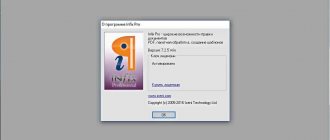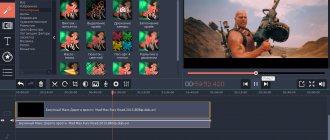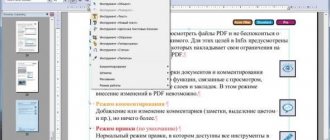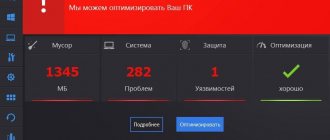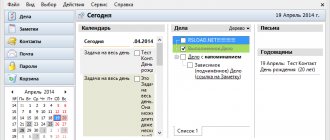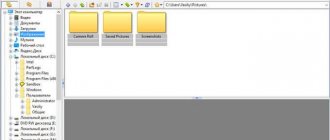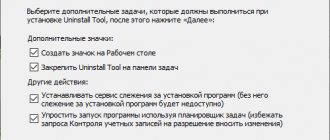Again about online application generators
In the previous article in this series, we discussed creating applications for the Android platform using Java and Android Development Tools (ADT). Today we will continue this topic by getting acquainted with a new product from Embarcadero - RAD Studio XE 5. Essentially, this product is a modern incarnation of Delphi, a Windows application development tool that has been incredibly popular in our country for many years, starting from the first 16 bit version, which appeared in the second half of the 1990s. But, unlike Delphi of the late 1990s and early 2000s, RAD Studio XE 5 is a tool that allows you to create applications not only for Windows, but also for Mac OS, Android, iOS, and, importantly, based on one and the same source code and resources - having created an application project, you can simply compile the executable code for any of the named platforms. Development of mobile applications is possible using the Architect, Ultimate, Enterprise editions, as well as the Professional edition, provided that the Mobile Add-On Pack extension module is purchased with it. The development environment itself is available only for the Windows platform. If desired, in RAD Studio XE 5 you can develop in C++Builder, as well as create HTML-5 applications.
This publication cannot be considered a traditional product review - like all articles in this series, it gives an idea of the tool by describing the process of creating a mobile application with minimal effort.
You can get started with RAD Studio XE 5 by downloading a 30-day trial from Embarcadero (available for various versions of Windows). The product installation process is carried out directly from the manufacturer’s website, so it is worth doing this by ensuring that you have a reliable and not too slow Internet connection.
After installing RAD Studio XE 5 itself, you should take care of installing support tools for the platforms for which you intend to create the application. So, to develop applications for the Android platform, we need the Android SDK, already familiar to us from the previous article, with support for selected versions of the platform - it can be installed by launching the Android Tools application included with RAD Studio XE 5 (Fig. 1).
Rice. 1. Selecting an application for modification
If the application is to be tested on a real device, its driver should be installed on the computer with the development environment (usually it can be found either on the device manufacturer’s website or on the Google website). On the device itself, you should enable remote debugging of applications in the settings.
To develop iOS applications, you will need a computer running Mac OS X to run the emulator. If you don’t have the latter, you can use Embarcadero’s MacinCloud cloud service, which also has a trial period of 24 hours. To test iOS applications on mobile devices and then upload them to the AppStore, you should also join the Apple iOS Developer Program or a similar program for universities or corporate clients.
The development environment itself looks quite traditional (Fig. 2) - a project manager (Project Manager, top right), a component palette with groups of interface elements and so-called non-visual components (Tool Palette, bottom right), a tree with the structure of form components (Structure, left top), Object Inspector (bottom left), form and code editor (center).
Rice. 2. Replacing the application logo
We will begin creating our very first application (as always, dedicated to introducing ComputerPress magazine) by using a ready-made template. To do this, in the main menu of the development environment, select the item File->New->FireMonkey Mobile Application and, among the proposed application templates, select the element Tabbed with Navigation (Fig. 3).
Rice. 3. Editing buttons
As a result, an application project will be generated, similar to the one the creation of which was described in the previous article of this series, and which is a notepad with four tabs, on each of which you can further place interface elements (Fig. 4).
Rice. 4. Setting the functionality of the buttons
By selecting a potential platform for running an application in the upper right corner of the form editor, you can see how it will look when executed on a particular platform.
Next, by selecting interface elements with the mouse (in our case, labels and tab titles), we can change the labels on them using the Text property in the object inspector.
For iOS applications, using the StyleLookup property, you can also select icons placed on notepad shortcuts (Fig. 5).
Fig.5. Widgets available for selection
The next step in creating our application is to add interface elements to the notepad tabs. To do this, click on the “About the Journal” tab, select the TMemo component in the Standard group on the component palette (Delphi users are familiar with it, but for beginners I’ll tell you that it’s just a multi-line text editor) and place it on the form. Let's find the Strings property in the object inspector, click on the button with the ellipsis and copy the brief information about our journal borrowed from our website www.compress.ru into the property editor that opens. From the list of possible values for the Align property of our Memo1 component, we select the value alClient - in this case, our text editor will occupy the entire area of the screen between the title and labels. And finally, we will set the Enabled property of this component to False so that the user of our application cannot edit the text (Fig. 6).
Rice. 6. Publish the application for testing
Let’s repeat all the same steps with the “Categories” tab, placing in the created Memo2 component the text borrowed from the same website about the magazine’s headings.
Next, let's give our application some variety - on the next two tabs we will place not a text editor, but a browser - the TWebBrowser component (it can be found in the Internet group of the component palette). Let's change the Align property of these components to the alClient value. Next, fill in their URL properties. For the component on the “Our Site” tab, enter https://www.compress.ru as the value of this property, and for the TWebBrowser component on the “Coordinates” tab, enter a link to the Yandex.Maps server, which will indicate the search result for the building editorial office on the map of Moscow. Then save the project.
So far, our application has certain disadvantages: for example, it does not have the ability to return to the previous page in browsers on the third and fourth tabs. Let's correct this shortcoming. To do this, at the top of one of the browser tabs, we will place two TSpeedButton buttons, linking one of them to the upper left and the other to the upper right corner by selecting the options akTop, akLeft, akRight of the Anchors property of each button and adding arrow images to them using the already familiar StyleLookup property (Fig. 7).
Rice. 7. Finished application - iPhone 5 screenshots
Let's double-click on each of the buttons, after which empty event handlers associated with clicking on them will be generated. Let's add one line of code to them (highlighted in bold):
procedure TTabbedwithNavigationForm.SpeedButton1Click(Sender: TObject);
begin
WebBrowser1.GoForward;
end;
procedure TTabbedwithNavigationForm.SpeedButton2Click(Sender: TObject);
begin
WebBrowser1.GoBack;
end;
These two lines of code mean that when you click on one of the buttons, you move to the previous page that opened in the browser, and when you click on the second button, you move to the next one.
And finally, select both buttons, copy them to the clipboard, go to the tab with the second browser and remove them from the clipboard. If you do this carefully, the buttons will be copied along with their properties and event handlers. Let's save the project.
Actually, this will complete the creation of the application. Now it can be compiled and tested. Let's start by compiling the application for the iOS platform. First, you need to connect to a computer with Mac OS X, located on the same network as the Windows computer on which development is carried out, or to the MacinCloud service. In the first case, you also need to install the Platform Assistant console application on a computer running Mac OS X and launch it, and then enter a password to access it in the RAD Studio XE 5 development environment. Then you should describe the connection to this computer by selecting the option in the main menu of the development environment Tools->Options. The Connection Profile Manager section of the Options dialog panel contains a list of connection profiles to which you can add a new profile by specifying the computer name and password to access the running instance of the Platform Assistant application (Figure 8).
Rice. 8. E-book created using the appropriate template
You can test the connection using the Test Connection button. If problems arise, it is worth checking whether the computer running the Platform Assistant application is accessible on the network and whether the port through which the connection between computers is made is open.
After successfully connecting to the Platform Assistant application, in the project manager, select the appropriate platform and the configured connection profile with a computer running Mac OS (Fig. 9).
Rice. 9. Create an iPad application
Select the main menu option Run->Run or press the F9 key. We wait for a while and an iPhone emulator with our application will appear on the screen of a computer running Mac OS X.
Now let's try to compile the same application to run on the Android platform. Let's connect the device used for testing, select the device and platform in the Target Platforms section of the project manager and run the application again using the F9 key.
After a relatively short period of time, our application will launch on the connected device.
So, we have created a cross-platform application that can run on both iOS and Android. At the same time, we did not need to use any special execution environments or code generation with subsequent compilation in development environments like Xcode or Eclipse + ADT - RAD Studio XE 5 creates so-called native applications. This means that the performance of such applications should be comparable to the performance of applications created, for example, using Xcode or ADT.
Miracles, of course, do not happen - the size of executable files created using RAD Studio XE 5 will probably be larger than when using Xcode or ADT. But space on mobile devices, you see, is not the most expensive resource today - investments in the knowledge and skills of mobile application developers will cost much more. And here RAD Studio XE 5 is still out of competition - supporting two of the most popular mobile platforms at once means that there is no need to have separate development teams for iOS and Android. It is also important that companies that decide to implement RAD Studio XE 5 have access to a huge number of Delphi and C++Builder experts of all ages and with a wide variety of experience on the Russian labor market - after all, this tool is, after all, almost 20 years old.
In conclusion, I would like to draw your attention to the fact that the Embarcadero website has a huge amount of educational materials on developing mobile applications using RAD Studio XE 5, and this collection of materials is constantly growing. Therefore, mastering this tool will not be too difficult even for beginners.
The previous two articles in this series were devoted to a brief introduction to professional application development tools using the Android Development Toolkit and a new product from Embarcadero - RAD Studio XE 5. We conclude the topic of professional tools for creating mobile applications, and today we will return to online application generation services , the use of which, as we already know, in some cases can be more effective than independent development using professional tools.
The service that today's article is devoted to is called iBuildApp and is an online application builder for smartphones that does not require any programming skills from the user. It belongs to the American company of the same name with a Russian representative office in Vladimir.
You can create applications using the iBuildApp service for free, and you can (but not necessarily) publish them in online application stores on your own. At the same time, the owners of the service provide users with a number of paid services, such as publishing applications in online stores for those who are not ready to publish on their own, assistance in monetizing applications (that is, making a profit by placing advertising in them), sending push and GPS messages -notifications to application users, 24/7 email support. Payment for services is possible on a monthly basis in accordance with various tariff plans, differing in the number of application downloads and the availability of the services listed above. Moreover, all tariff plans, including the free one, include access to ready-made application templates (including free and paid ones) and built-in components (widgets), technical support, the ability to see application performance statistics and downloads.
Special mention should be made of application templates and ready-made widgets - this service has a lot of them. Templates are available for different types of companies, types of activities, application categories, and you can change design options for a ready-made template and add widgets to it. If you wish, you can create your own templates and widgets and place them in the iBuildApp tools catalog, or order the development of a widget or even an entire application from the owners of this service.
Let's take a look at what you can create with the free plan. Let's start with the ComputerPress application, traditional for our cycle, with information about our magazine. To do this, you need to choose either a template or an almost finished application that can be modified.
From the ready-made applications, we will choose “Small Business” - the editorial offices of magazines for the most part belong to this category of companies (Fig. 1).
After making the selection, we will find ourselves in the application editor, in which, by opening the elements of the list of possible actions sequentially or in random order, we can customize its appearance or functionality, for example, replace the background or logo (Fig. 2).
I would like to draw attention to the support for the Russian application interface and the presence of a Russian interface in the online application editor - now not all such services have even the first of these features.
Next, you can make changes to the number and appearance of buttons, and you can choose your own graphic images for them (Fig. 3).
The button functionality available by default can also be replaced with the desired one. In particular, it is possible to select the necessary widgets from a fairly extensive list and configure their parameters, for example, entering text and pictures in the case of a widget displaying a static HTML document (Fig. 4).
Among the widgets available today are widgets for displaying RSS feeds, HTML documents, interfaces with Twitter and Facebook, video lists from YouTube and Vimeo, interfaces with the phone, email client, Google Map mapping services, contact management tool, calculator, camera, photo gallery, an electronic book, a QR code scanner, free-form input with user-selectable interface elements and many others (Fig. 5).
Users also have the ability to create their own widgets and templates to use in their applications.
Once you have finished building the functionality, you can make the application available for download in accordance with your tariff plan. The free plan offers two ways to publish an app: creating a package for download on an Android device (which means we don't have to publish the app to the Google Play store) and creating an HTML5 app (which means we can test it on a device running iOS, without publishing the application in the AppStore and without purchasing an iOS developer license - Fig. 6).
In Fig. 7 shows screenshots of an iPhone 5 running a ready-made application downloaded from the link above.
Because we're using the free plan, the app includes an iBuildApp splash screen ad that appears when the app loads, an ad line on the title page, and banner ads that appear at the top of other pages when you open them (they can, however, be closed).
“Small Business” is not the only type of application available to users of the iBuildApp service. The range of potential consumers of ready-made applications and templates for this service is very diverse - from cafes and restaurants to religious organizations. For example, an e-book created from the appropriate template looks very good (Fig. 8).
In addition to applications for smartphones, the iBuildApp service also allows you to create applications for iPad. The choice of templates for this type of application is still small, and the finished application can only be tested in a browser (Fig. 9).
In addition to creating applications, the user of the service can create their own application templates (for this there is an online template editor that supports drag-and-drop operations) and sell them, as well as create their own widgets using XCode or Android SDK. But if you don’t want to deal with the issues of form design, purchasing a developer license and using development tools, you can get by with ready-made templates and widgets.
This concludes our acquaintance with the iBuildApp service for quickly generating mobile applications. It differs from similar services in the large number of templates and ready-made applications available for use, full support for the Russian language, not only in the applications created, but also in the online application editor, a very flexible pricing policy and a wide range of features available for free or for a nominal fee. Potential consumers of such a service can be companies and organizations of various profiles: cafes, restaurants, medical institutions, fitness clubs, retail enterprises, electronic stores, educational institutions, publishing houses, online stores, clubs. If such a consumer has a need for a Russian-language mobile application with more or less standard functionality, he should pay attention to this service - its use is highly likely to be much more effective than implementing or ordering individual development.
ComputerPress 12'2013
GreenTech_Reviews
Instructions for unlocking Hawaii, Tonga and Fiji GPU cores
Warning: the software is provided “as is”; neither the GreenTech Reviews administration nor the author of the instructions are responsible for your actions and results. You do everything at your own peril and risk.
Author of instructions: tx12
To work you will need: 1) Memory Info () utility 2) CUinfo () utility
Download both utilities, unpack CUinfo into the folder with Memory Info. Make sure that no 3D application is running (even in the background). Run CUinfo and check the result. For example, in this case all cores are active:
Adapters detected: 1 Card #1 PCI ID: 1002:67B0 — 1043:0466 00 DevID [67B0] Rev [00] (0), memory config: 0x500036A9 Hynix Hawaii-class chip with 11 compute units per Shader Engine SE1 hw/sw : F8000005 / 00000000 [………..] SE2 hw/sw: F8000005 / 00000000 [………..] SE3 hw/sw: F8000005 / 00000000 [………..] SE4 hw/sw: F8000005 / 00000000 [ ………..] 44 of 44 CUs are active. HW locks: 0 / SW locks: 0. All CUs in this chip are already active.
But here is not all:
SE1 hw/sw: 00050000 / 00000000 [………….xx] SE2 hw/sw: 00030000 / 00000000 [………………..xx] SE3 hw/sw: 00030000 / 00000000 […………..xx] SE4 hw/sw: 00030000 / 00000000 […………..xx] 56 of 64 CUs are active. HW locks: 8 (R/W) / SW locks: 0 (R/W). 8 CU's are disabled by HW lock, override is possible at your own risk.
Now let's try to unlock the cores of the Fiji GPU. To do this, we additionally need the atomtool() utility. To create a backup and flash the BIOS itself, you will need atiflash for Windows v2.70. Download the GPU Tweak II or R9 FURY BIOS update toolkit from the ASUS website. Install GPU Tweak II or extract R9 FURY BIOS update toolkit to a new folder. This way you will get a Fiji compatible version of atiflash. Required files from GPU Tweak II or R9 FURY BIOS update: atidgllk.sys, AtiFlash.exe, atikia64.sys, atillk64.sys, ULPSCtrl.dll. ATTENTION: do not use the option with a graphical shell, AtiWinflash.exe does not work correctly. Use atiflash.exe ONLY.
atomtool.py is a program in Python 2, if it doesn’t start, download and install Python (https://www.python.org/downloads/windows/).
Make a BIOS backup. And do it through atiflash, because... other programs (for example, GPU-Z) incorrectly capture the BIOS image of Fiji video cards.
Open the command line, go to the directory with the atiflash program, execute the command atiflash -s 0 bios_backup_xxx.rom - this saves a BIOS backup. Then turn off the PC, switch to another BIOS version and also make a copy of it via the command line - atiflash -s 0 bios_backup_yyy.rom
Launch CUinfo and look at the report: SE1 hw/sw: 00050000 / 00000000 [………….xx] SE2 hw/sw: 00030000 / 00000000 […………..xx] SE3 hw/sw: 00030000 / 00000000 […… ……..xx] SE4 hw/sw: 00030000 / 00000000 […………..xx] 56 of 64 CUs are active. HW locks: 8 (R/W) / SW locks: 0 (R/W). 8 CU's are disabled by HW lock, override is possible at your own risk.
In this case, unlocking is possible. If the program writes “Sorry...”, then you can close this instruction and forget about unlocking.
It's time to use makeroms.bat. You can get three BIOS versions (bios_4low.rom, bios_4high.rom or bios_all.rom) depending on the information received in CUinfo. Select the option you want: If you have 'x' in the first right column, use bios_4low.rom If you have 'x' in the second right column, use bios_4high.rom Both options should increase the number of cores to 3840.
If you have 'x' in both columns, then try bios_all.rom, but this may not give the desired result (the system will be unstable or will not start). Then try bios_4low.rom or bios_4high.rom in turn. Theoretically, bios_all.rom should unlock all 4096 cores.
And flash the resulting BIOS into the chip: atiflash -p 0 NEW_bios.rom
It remains to check the stability of the “new” video card.
V3.5
– Removed donation – Added support for several more cards – This is the latest version, happy using
V3.4
– Added power control limit – Added fan mode selection – Med-High temp and PWM now editable – Added fan sensitivity and maximum limit – Bug fixes
V3.3
– Added support for RX550 cards – Minor bug fixes
V3.2
– Added support for bios having 3 types of memory – Added more options in the VDDCI dropdown list
V3.1
– Added option to set `Vddc state flag`, in some cases changing this value can help you change the voltage – Added support for several more cards
V3
– Unlock additional RX460 shaders – Added support for Sapphire RX460 2G and 4G cards – Added support for Sapphire RX560 2G and 4G cards
V2.65
– Added support for PowerColor RX460 2G – Fixed bug with changing VDDC pointer
V2.64
– Added support for PowerColor RX560 4G – Added support for Xfx RX560 4G – Also added support for Msi RX560 4G
V2.63
– Added support for a few more cards – Added some voltage manipulation tips
v2.62
– More efficient way to find vddc pointer – Fixed bug when editing vddc
v2.61
– Added support for RX 460/560 Baffin cards – Added support for NCP81022 VRM – Additionally added support for multiple 4XX/5XX cards
V2.6
– Editable parameters: VendorID, DeviceID and VendorID Subsystem – Added “Low Power” option for Powertune – Added “Number of Clock Stretch” option for Powertune
v2.56
– Added support for ASUS Expedition RX570 – Added support for XFX RX580 GTR – Added more options for the VDDC dropdown menu
v2.55
– Fixed some bugs – Added more VDDCI voltages to voltage modification type
v2.53
– Added support for ASUS RX470 8G – Added support for XFX RX580 8G – And also added support for SAPPHIRE PULSE RX580 4G
v2.52
– Now added support for SAPPHIRE PULSE ITX RX 570 4G – Added support for MSI RX570 ARMOR 4G OC – Added support for HIS RX570 4G – Changed manufacturer detection code
v2.51
– Added support for Sapphire RX570 4G Pulse – Added support for MSI RX570 ARMOR 4G OC – And also added length (in bits) displayed next to each field in the feed editor
V2.5
– Added memory timing editor (BETA) – Added support for Asus RX570 4GB cards
V2.41
– Added support for XFX RX570 4GB cards – Added support for editing unknown BIOS files (except def.frequencies and voltage)
V2.4
– Added two types of modification to change voltage
V2.3
– Added experimental support for RX5XX cards – Added option to set target temperature
Polaris BIOS Editor how to use
It is very easy to use. Download and unpack it to a place convenient for you. And start the program.
Click Open Bios in the upper left corner. Your firmware opens, where it is circled in red on the kart and contains your timings.
How to choose timings automatically or manually. Below is the video. As well as questions and descriptions.
I hope you understand. If the video doesn't load, see the screenshot below.
After opening the firmware, click One click timing patch (red arrow). All timings were automatically edited. Now click Save as. All firmware is saved.
All versions of polaris bios editor were taken from the official website and passed all checks, including for viruses.
A more detailed article about amd rx firmware - BIOS firmware for AMD video cards.
You can change the voltage in the gpu and memory columns, if you don’t understand what this is, it’s better not to flatter, your card will turn into a brick.
Target temperature - this is the temperature that the card will try to maintain, either by increasing the cooler speed, or by lowering the frequencies, which is used less often, it all depends on the manufacturer.
